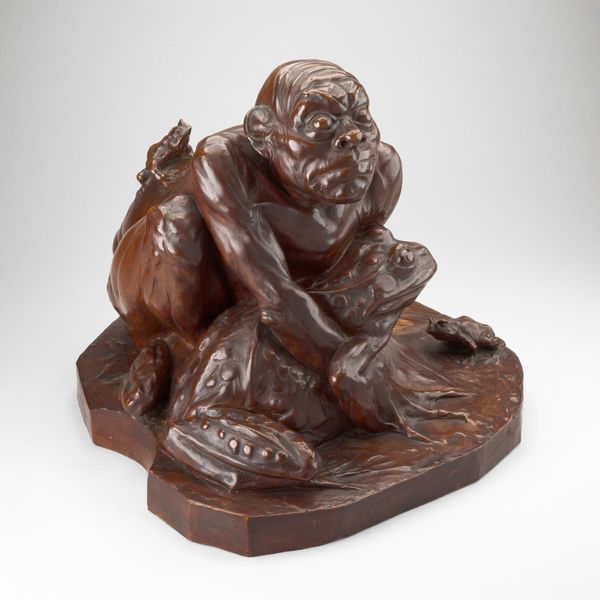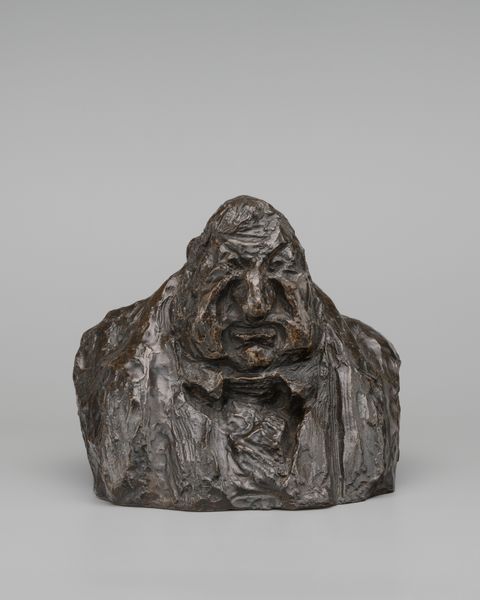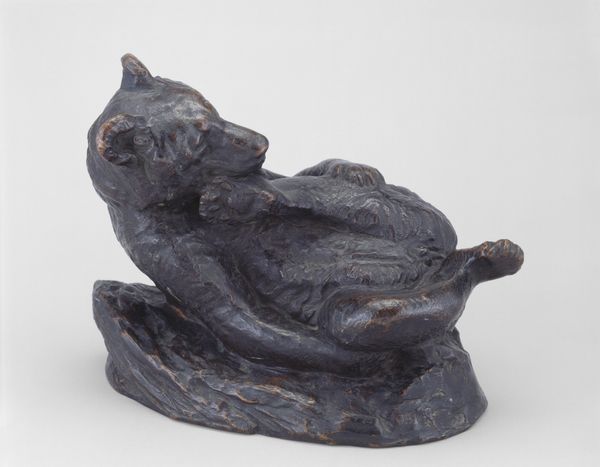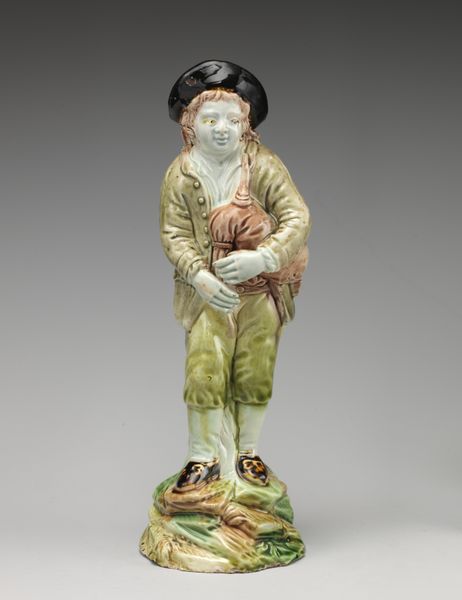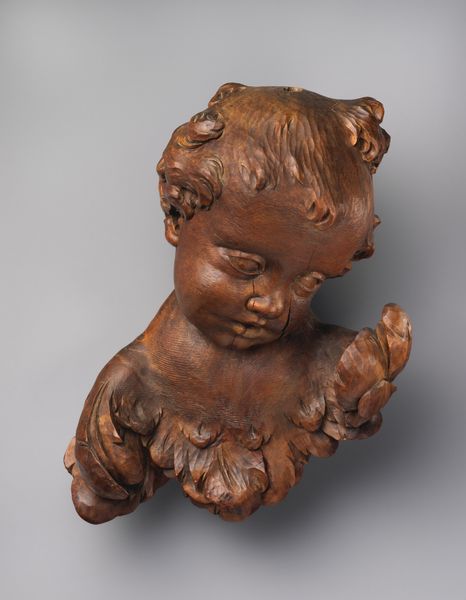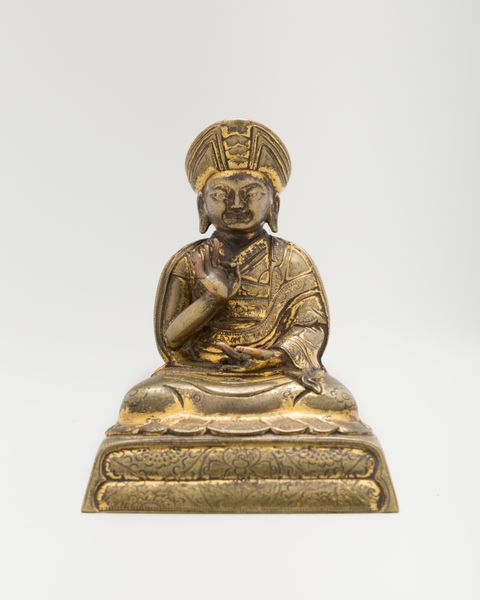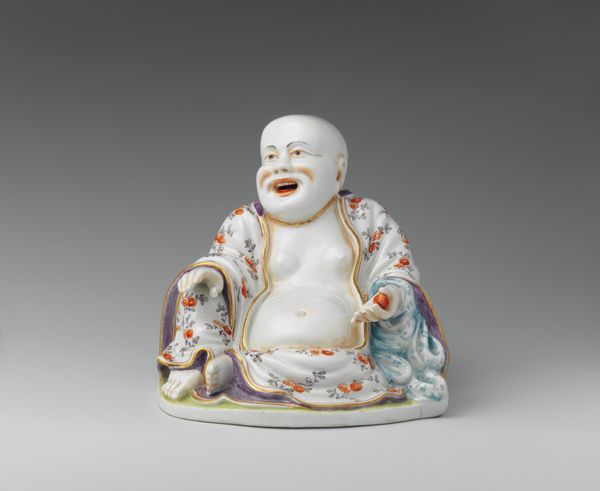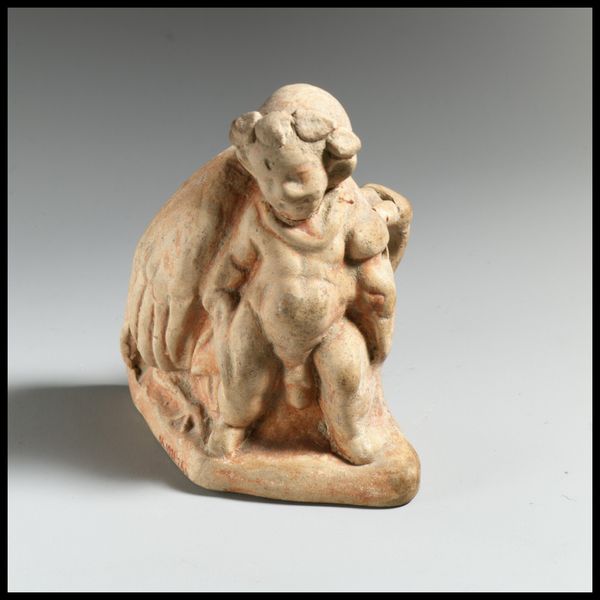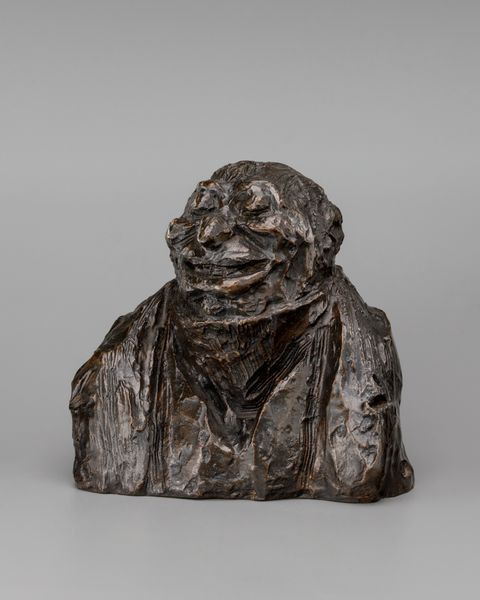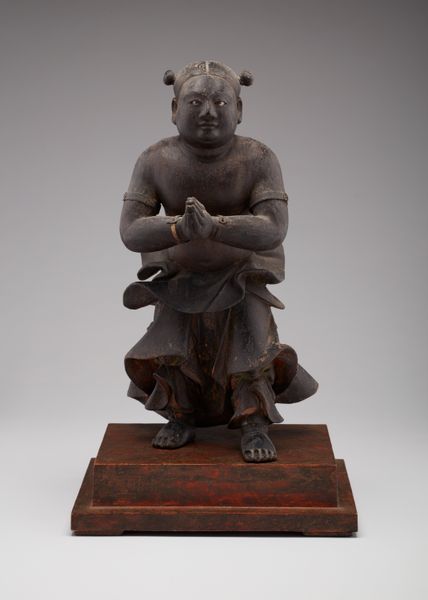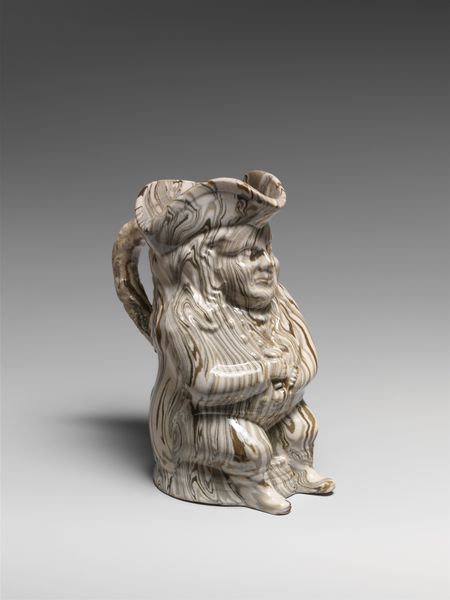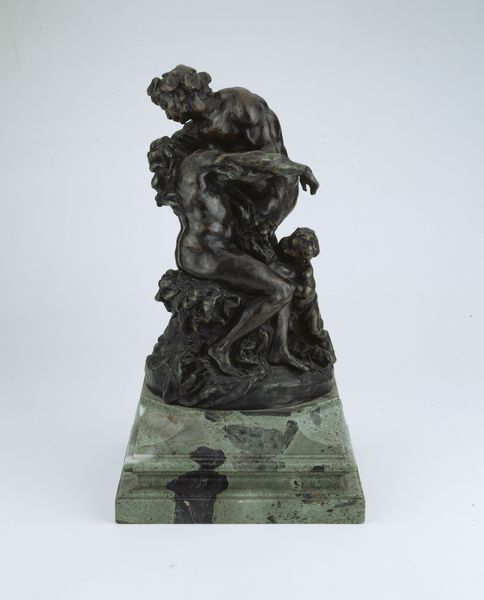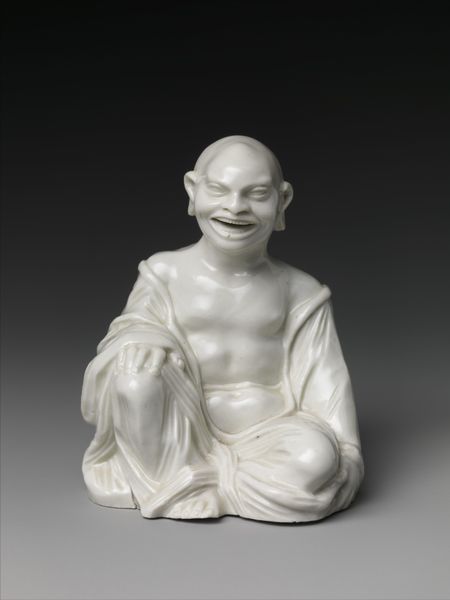
bronze, sculpture
#
portrait
#
art-nouveau
#
sculpture
#
bronze
#
sculpture
#
realism
Dimensions: overall: 22.86 × 17.78 × 21.59 cm (9 × 7 × 8 1/2 in.)
Copyright: National Gallery of Art: CC0 1.0
Editor: This is Bessie Potter Vonnoh's "Bust of Baby," made in 1901 out of bronze. It's hard not to notice the textural contrast between the smooth face and the roughly worked cloak. How would you approach interpreting a sculpture like this? Curator: As a materialist, I'm particularly interested in the bronze itself. Consider its origins: mined, smelted, poured. It was an industrial product even at the turn of the century. Doesn't that shift the traditional sentimentality we often associate with images of babies? How do you think Vonnoh’s choice of bronze, as opposed to say, marble, shapes our understanding of the artwork? Editor: That's a really interesting point. I hadn't considered bronze as an "industrial product." Using that material, even with the very intimate subject, sort of bridges high art with the realities of early industrial society, right? Almost like labor is embedded in the very substance of the piece. Curator: Exactly! And think about the consumption of such objects. Who would have commissioned or purchased this bust? Likely members of the burgeoning middle class, eager to display their refined taste and material wealth, further illustrating an individualist approach. This creates an interesting commentary on consumer culture through material and production. Do you think Vonnoh intended this commentary? Editor: I am not sure if she did or didn’t, but it definitely brings an entirely new layer of depth to what I previously saw as just a cute portrait. It’s fascinating to consider the social context ingrained in the very materiality of the sculpture. Curator: Precisely. It pushes us to examine beyond the surface image. It urges us to ask whose story the object really tells - not just of the baby, but the social and economic conditions that allowed its creation and consumption. Editor: I'll definitely look at sculpture with a more critical eye toward materials from now on.
Comments
No comments
Be the first to comment and join the conversation on the ultimate creative platform.
